
Salty Sam’s Fun Blog for Children
Number 104
The Clink
Hello Everyone

All over the English speaking world, people use the phrase ‘to be in clink’ meaning to be in prison.
There was actually a prison called The Clink in London. lt was owned by the Bishop of Winchester who owned the land it stood on and he made an income (money) from it. This was because it was a private prison. The Bishop of Winchester was the brother of King Stephen and grandson of William the Conqueror.
Now there is a museum on the south bank of the River Thames demonstrating what life was like inside that prison and other prisons that have existed since.
Last time l took my nephews to London, they wanted to visit this museum but they were too young to go inside. This is because it is a very dark and spooky place to be and very, very scary.
So l just told them about the time l went there instead. This blog is not for the faint-hearted!
But if you think you are up to it, read on…
The Clink was a mediaeval prison and operated until 1780. lt may have been the oldest prison in England. lt is said that it was the first place that women were formally locked up in a prison.
lts name probably came from the noise of the clinking chains that the prisoners wore and the metallic sound of the bolts closing on metal prison doors. A blacksmith would put chains on the prisoners as they entered the prison.
Life was very harsh in The Clink. When the tide came in the River Thames could flood the cells and the prisoners had to sit on their bunks to keep out of the dirty water. At high tide they were waist deep in sewage.
When they were hungry the prisoners sometimes made little cages to keep rats in and fatten them up! Yuk!!! The rats could eat almost anything. They could eat things that people couldn’t eat like fat and leather.
But the inmates could make life easier by paying the warders for food and more comfortable bedding. They could even bribe (pay) the warders (prison guards) and blacksmith to put lighter irons and chains around their ankles – or even take them off altogether.
lf they were lucky, they had friends or family who would come from outside to visit with money to help pay for these things.
The museum shows what prison life was like over hundreds of years; and it was unbelievably grim.
People could be put in prison or punished in some other way for very minor (small) offences. A cook could be boiled in oil for example if the guests didn’t like what he had prepared for dinner!
He could be plunged into boiling oil – or the temperature could be raised slowly!
From 1352, people who owed money could be put in prison too. ln fact, Charles Dickens’ parents were put in debtors’ prison along with most of their children. ln the last years of the Clink’s existence most prisoners were debtors.
There are plenty of displays at the museum showing how people were punished in the street by being locked into a pillory or the stocks. The townspeople would then throw rotten food and other missiles at them.
Or sometimes prisoners were tortured, quite often to get a confession out of them; they could be put on the rack and stretched, pressed under great weights or force fed huge amounts of liquid through a funnel.
The prisoners in The Clink were not fed and had to rely on friends and relatives bringing them food or else they begged at a grate in the wall.
lf they had no money to pay the blacksmith and warders, they would be thrown into a place called an oubliette. This was a chamber under the prison where the people were put and left. The name oubliette came from the French word ‘forgotten’ – and the people could be put in what they called ‘The Hole’ and left there until they would most likely die. This was absolutely the worse place to be.
The water from the River Thames flooded the oubliette and the prisoners died from drowning, infection or being permanently soaked. The river carried malaria, typhoid, typhus and dysentery and a lot of brown rats.
Executions were frequent. Prisoners could be hanged or hung, drawn and quartered. ln any case, living conditions were so bad that often people didn’t live to leave the prison anyway.
Heads and bodies of the executed could be put on display to warn others what their fate would be if they did not behave themselves. Their bodies could be hung in gibbets and put on display by the roadside or their heads could be stuck on poles.
ln London, the heads were displayed at the top of the gateway to London Bridge.
lt makes you want to always be good, doesn’t it?
Bye bye everyone – don’t forget to subscribe to my blog!
lf you like my blog, please support it by telling all your friends and followers about it.
Thank you!
And see you again next Fun Friday!
Love and kisses
Salty Sam

www.christina-sinclair.com

Bill and Bob’s Joke of the Week![]()
![]()
Bob: Why was the musician in prison?
Bill: l don’t know. Why was the musician in prison?
Bob: Because he was always getting into treble!
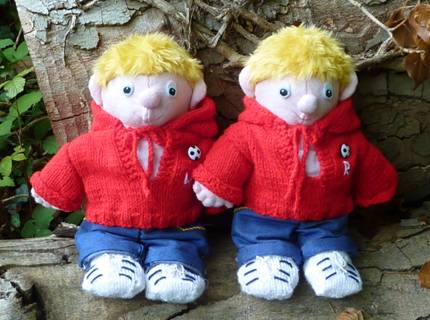
Salty Sam © Christina Sinclair 2015
Unauthorized use and/or duplication of material from this blog without express and written permission from this blog’s author and owner is strictly prohibited.
Links may be used to www.christina-sinclair.com

Picture Gallery
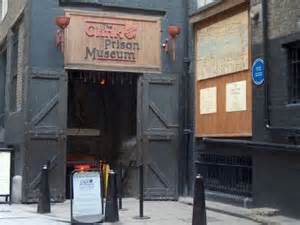
The entrance to the museum
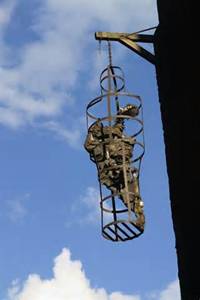
A gibbet where criminals would be placed on public display – dead or alive
These criminals were usually murderers, traitors (committing crimes against the country), pirates, highwaymen and sheep thieves
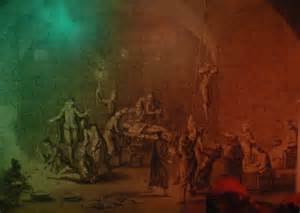
Prisoners could be tortured
 Life was harsh
Life was harsh

Prison cells were very dark
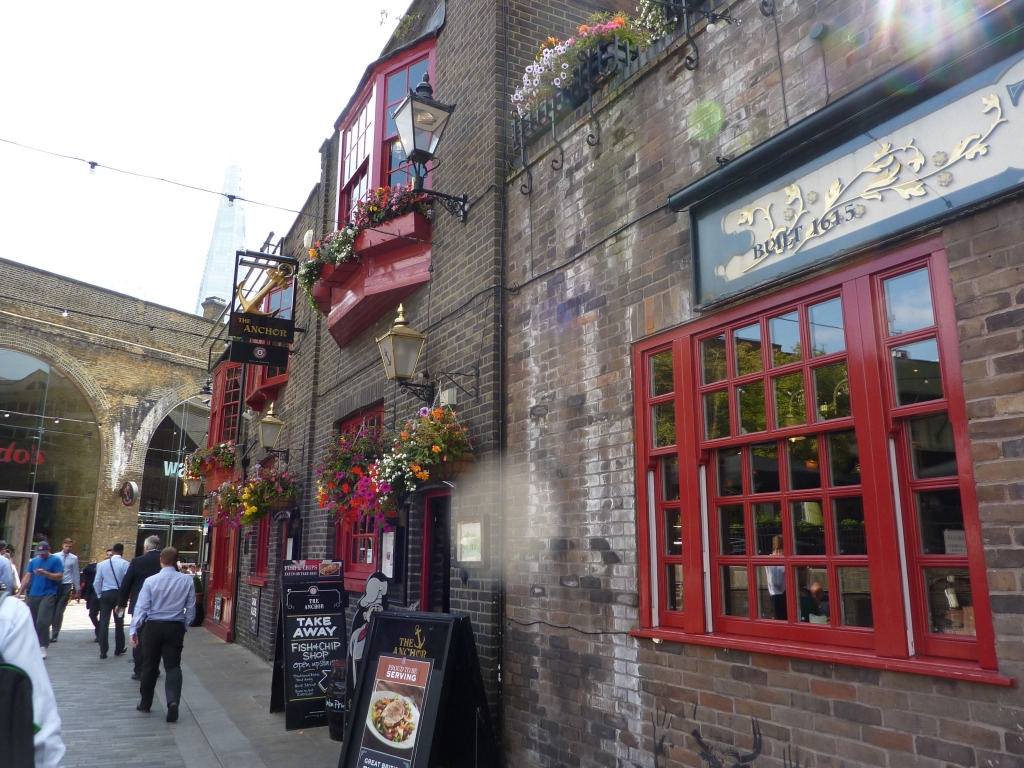
The Anchor pub by The River Thames is where William Shakespeare, Samuel Pepys and Dr Johnson used to drink

Follow the ally opposite
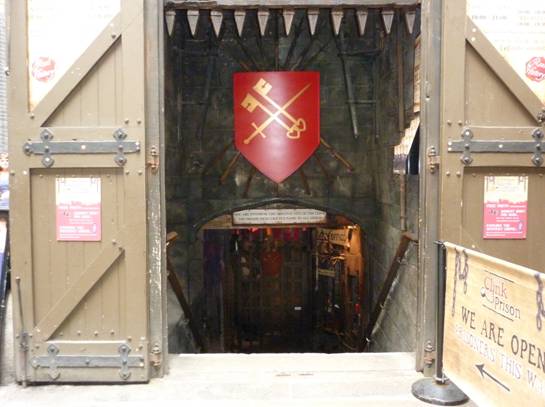
The entrance to The Clink
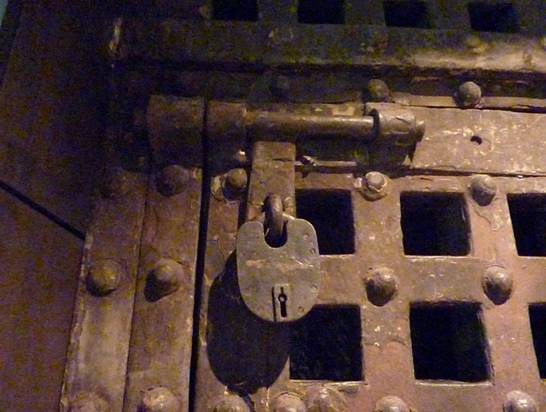 This is what prison doors used to look like
This is what prison doors used to look like
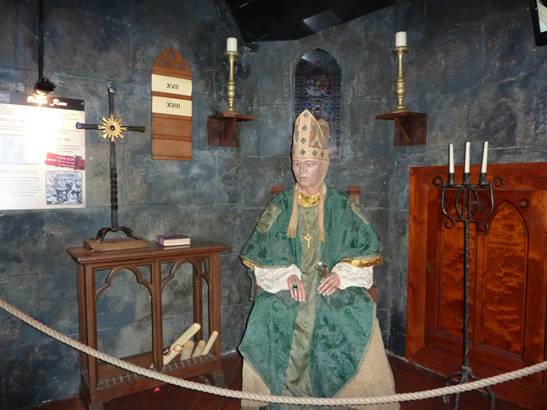 The Bishop of Winchester
The Bishop of Winchester
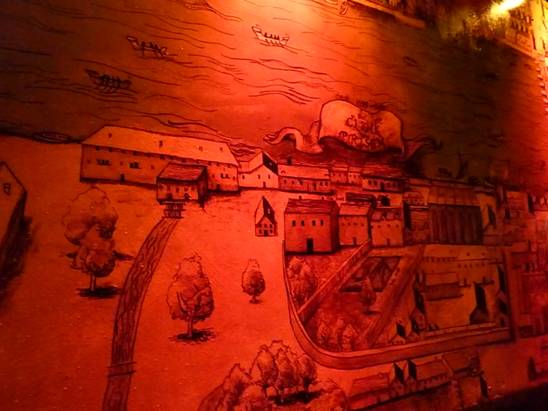
London was much smaller than it is today when the archbishop’s palace was built
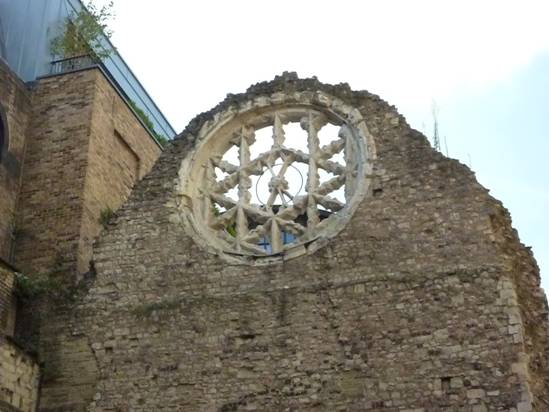
Only a few ruined walls remain of the palace
The Rose Window was part of the great hall
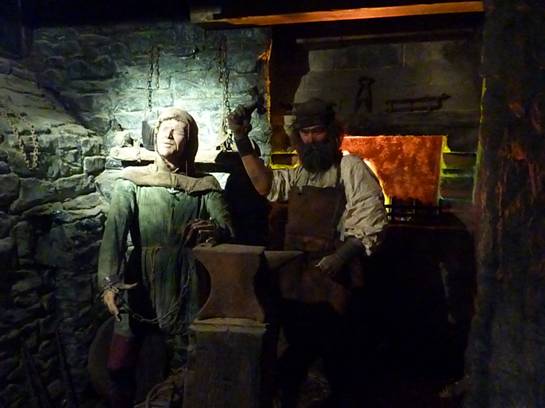
Manacles were fitted onto the prisoners by the blacksmith
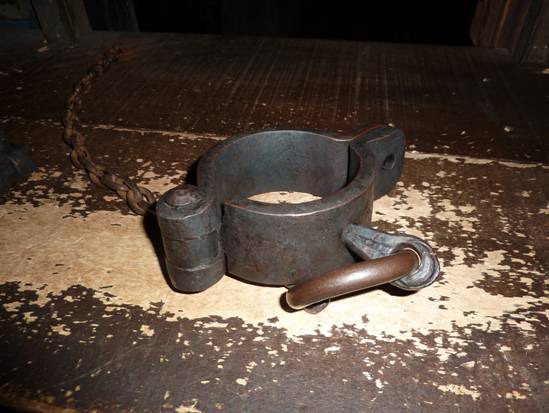 Manacles
Manacles
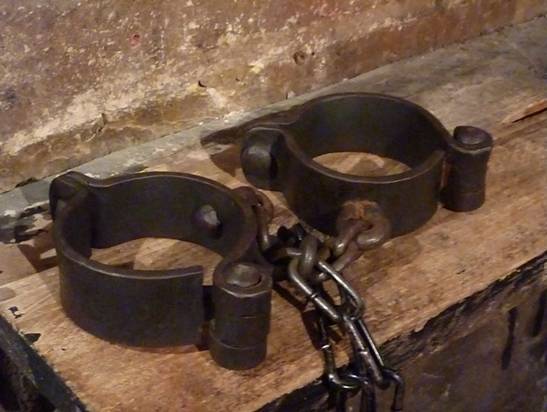 Prisoners could be strung up by chains
Prisoners could be strung up by chains
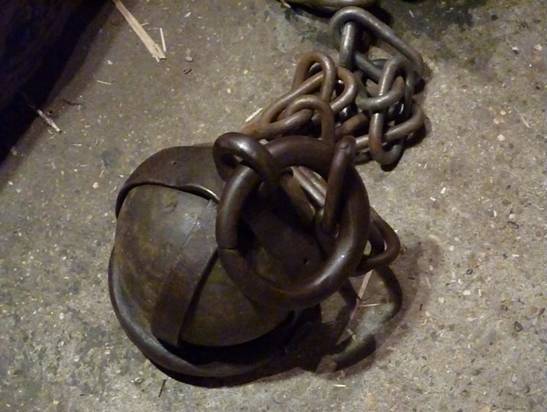
The ball and chain was used from the 17th century to the 20th century
It was attached to the ankle and made it difficult for people to walk, let alone run away
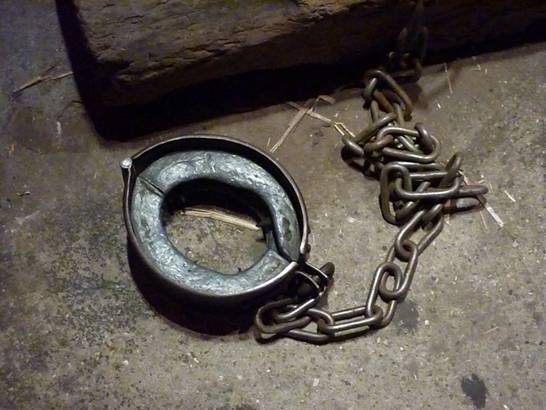 Neck collars were sometimes studded inside to make them more uncomfortable
Neck collars were sometimes studded inside to make them more uncomfortable
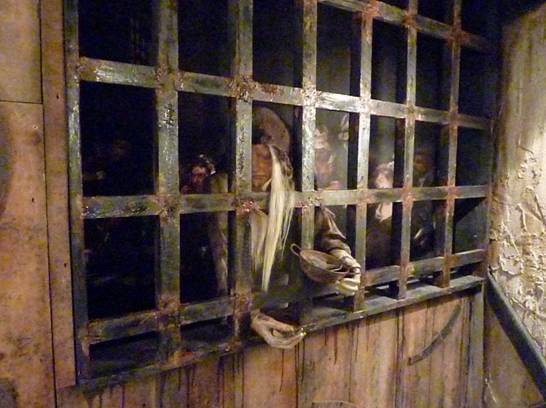 People begged for food at the wall of the prison
People begged for food at the wall of the prison
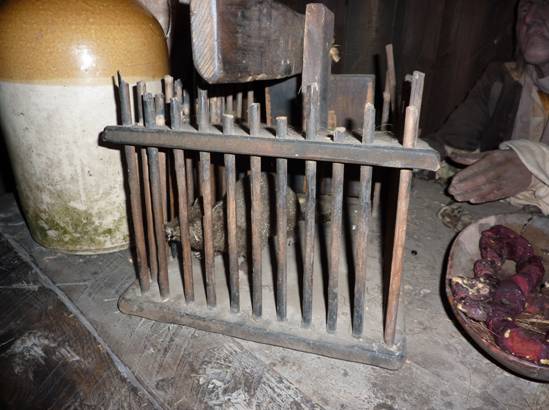 A brown rat kept for food
A brown rat kept for food
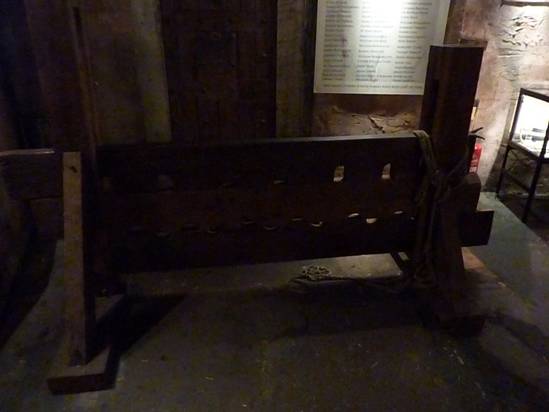 Stocks for three people
Stocks for three people
The people could sit down – the holes are for their wrists and ankles
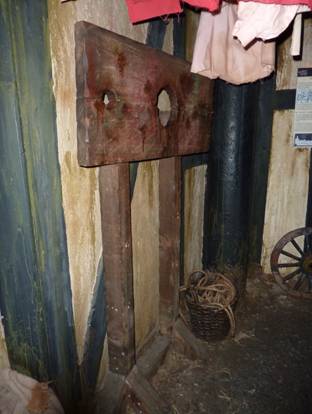
A pillory
The centre hole clamps on a person’s neck and the two smaller ones on their wrists
We still use the verb to pillory to mean ridicule or make fun of
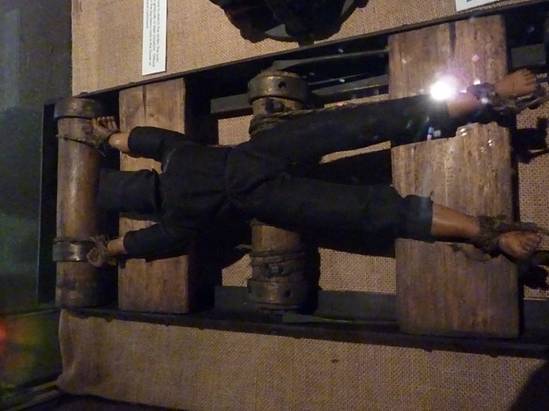 A model of the rack
A model of the rack
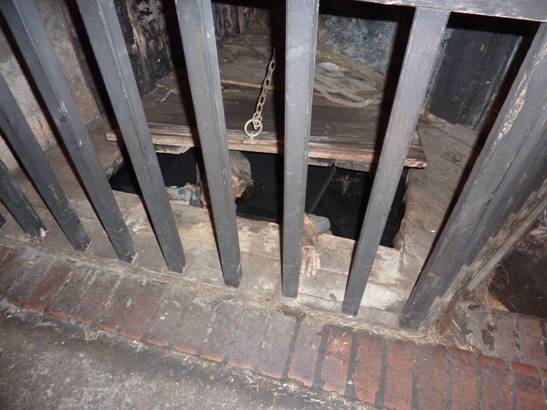
The hatch to The Hole
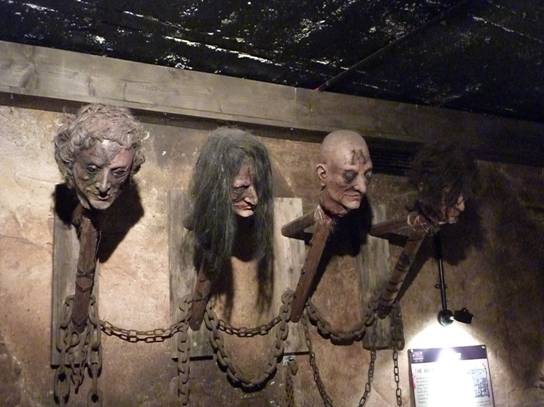 The heads of the executed were displayed as a warning to others
The heads of the executed were displayed as a warning to others
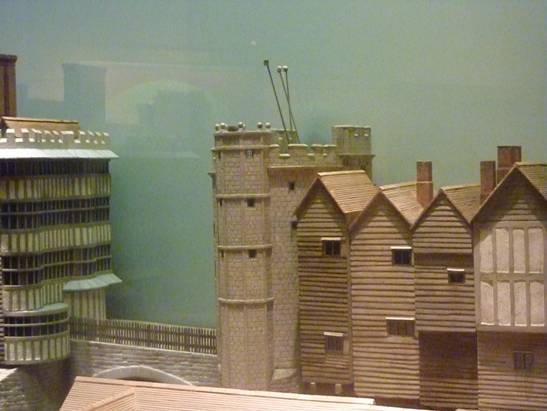 Heads were famously displayed on poles on London Bridge
Heads were famously displayed on poles on London Bridge
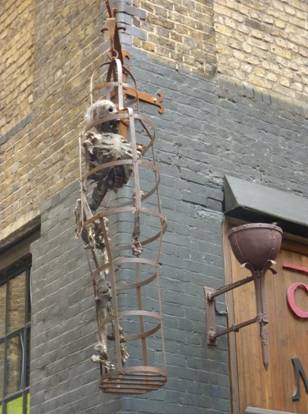
Gibbets were used until 1832
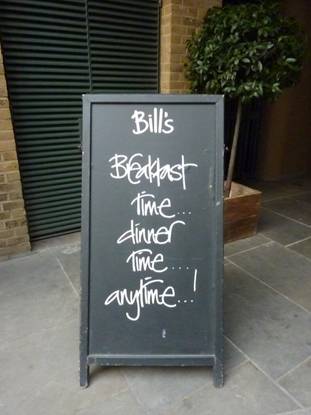 Then we went around the corner to have something to eat
Then we went around the corner to have something to eat
Bill especially liked the name of the restaurant!

 THE SALTY SAM NEWS DESK
THE SALTY SAM NEWS DESK

Are you on half-term holiday this week? Bill and Bob are, and I took them up to London to visit our cousin Smiley Sid. We often go up to London to visit our cousin Smiley Sid.
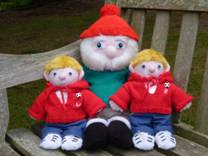
Of course there are many interesting things to see in London, but Bill and Bob like some things more than others.
The last time we went Bill and Bob especially wanted to visit London Zoo. They have a lot more animals there than in the Rocky Bay Animal World. They have a new scheme now where people can get up close and personal with giraffes and penguins. This means that you can go into the enclosure with the penguins and make friends with them or walk along a high walkway and look at a giraffe in the face. You have to be careful though, because they have very sloppy tongues!
There is a tiger territory as well – but you aren’t allowed to play with the tigers.
The zoo isn’t just about letting people see animals that they wouldn’t be able to see for themselves in the wild though; they do a lot of work called conservation.
This means that they carry out scientific research to find out more about animals and their environment which will help the animals in the future.
Also baby animals are sometimes born at the zoo, which is especially important if the animal is rare. The baby then is kept safe and has good care.
When animals are born in captivity, it is called breeding.
Every year, every zoo in the world stock-takes all their animals; this means they have to count every animal they have. This means a record is kept of how many of each type of animal there are in zoos. If it is difficult to count some animals, like locusts for example, they are listed as ‘one colony’.

Give us a kiss! ![]()

*********************
TO ADVERTISE ON THIS BLOG
PLEASE CONTACT:
christina.sinclair.ads@aol.co.uk
*********************


Quick Quiz
What do these phrases mean?
- a free for all
- to have a free hand
- to go scot-free
- with a free hand
- to make free with someone

BLOW MY FOGHORN!!!

PLUS
Salty Sam fans can join in with their comments and share them with children all over the world. You will need to ask permission if you are not an adult.
Enter your e-mail address to subscribe to my blog and receive new Salty Sam Blog Posts for free by e-mail every week. Your address will be kept private and will not be shared with any third party.
Sign me up at the side bar



lt’s the Weekend!

HOW TO MAKE AN lN-TRAY
If you are the kind of person that needs to get organised when it comes to homework, then this in-tray may be just what you need.


You will need 5 sheets of plastic canvas for the project and 3 colours of yarn of your choice (and a yarn needle).
It is a time consuming project, but this is the kind of work you can put down and pick up again easily another time.

You will need the following piece of plastic canvas for the inner bottom panel.
81 holes by 61 holes

Working from the centre point work 7 diagonal lines into squares 5 holes across.
W = white
C = colour
|
W\ |
C/ |
C\ |
W/ |
|
C/ |
W\ |
W/ |
C\ |
|
W\ |
C/ |
C\ |
W/ |
|
C/ |
W\ |
W/ |
C\ |
Work 5 stitches diagonally on top of them in the other direction in contrasting colours creating diamond shapes (Cross-Cornered Cushion Stitch).

Cross-Cornered Cushion Stitch
Stitch 8 squares length-ways down the panel and 6 squares across the panel (the pattern in the diagram will be repeated twice width-ways and three times length-ways). Make sure this section is centred properly.
Then stitch 3 rounds of white diagonal stitches and 3 rounds of yellow diagonal stitches with 2 extra lines of yellow each end around the central section.
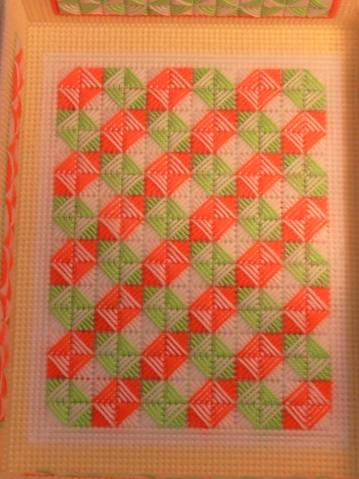
The inner sides are made from:
81 holes by 17 holes x 2 pieces
61 holes by 17 holes x 2 pieces
Cushion stitch 8 squares in white and orange in the centre of the longer sides and 6 cushion stitch squares in white and green in the centre of the shorter sides.
Add a contrasting border of orange or green to these sections and finish the rest of the panel in yellow diagonal stitches.
Attach the side panels to the base right sides together by using over-sew stitching in yellow yarn then sew up the corners.

The outer bottom panel is 85 holes by 65 holes and is not stitched.
The outer sides are made from:
85 holes by 18 holes x 2 pieces
65 holes by 18 holes x 2 pieces
Embroider to match the inner sides but add 2 rows of yellow diagonal stitches to the sides and 1 to the bottom.
Sew the sides to the base wrong sides together using over-sew stitching and white yarn.

Put a piece of white card between the boxes (32.4cm/12¾ inches by 24.4cm/9 5/8 inches) making sure that no ends of yarn are trapped underneath.
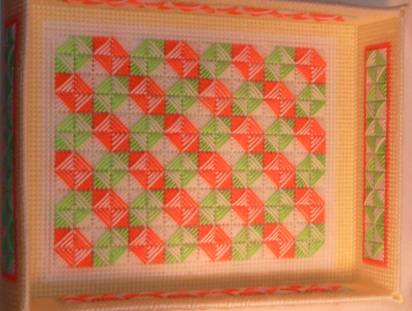
Sew the two trays together by over-sewing along the rim of the box using a contrasting colour.
Make sure that you line up your work correctly and when you come to a corner over-sew into 2 holes on one side then 2 holes when you go round the corner on the outer skin only.
You will have very pointed, rigid corner that will hold the box in shape when it is loaded with homework and the gap between the inner and outer panels will accommodate the bulk at the back of the embroidery.
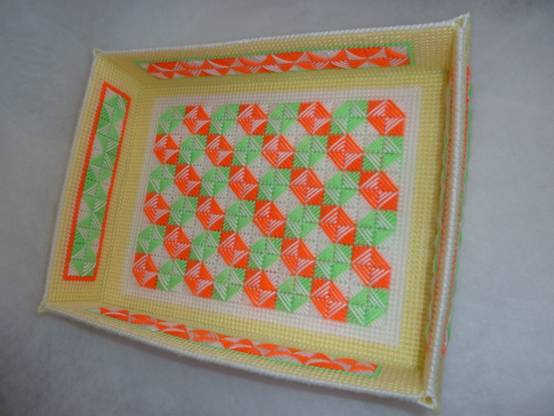

Please note that the material on this blog is for personal use and for use in classrooms only.
It is a copyright infringement and, therefore, illegal under international law to sell items made with these patterns.
Use of the toys and projects is at your own risk.
©Christina Sinclair Designs 2008

Quick Quiz Answers
- a free for all –
- to have a free hand –
- to go scot-free –
- with a free hand –
- to make free with someone –
- an argument
- freedom to do what you want with a project
- to be set free with no punishment
- to be generous with something
- to be too friendly with someone or to take too much of something
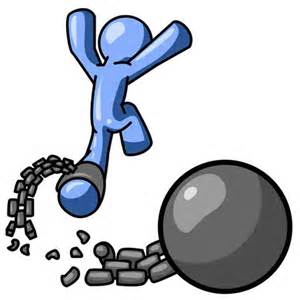



I can’t believe this blog. It is so different from all the others. Love it!!!
lt certainly is different from other blogs!
l am so glad you like my design and content Geoffrey and thank you for writing in!